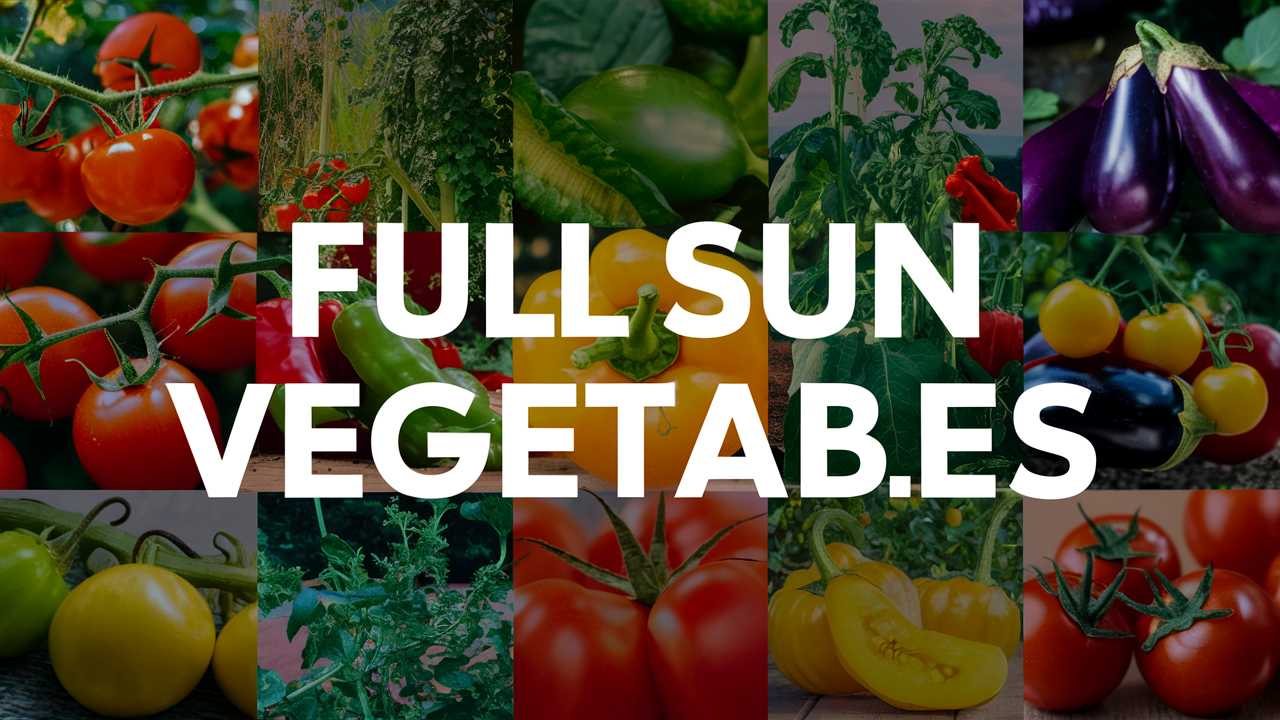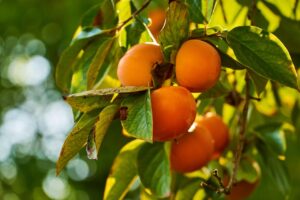This guide explores various ‘full sun’ vegetables that thrive under bright, warm conditions, ensuring your garden is as productive as it can be. Let’s dig into some of the best options available!
Tomato
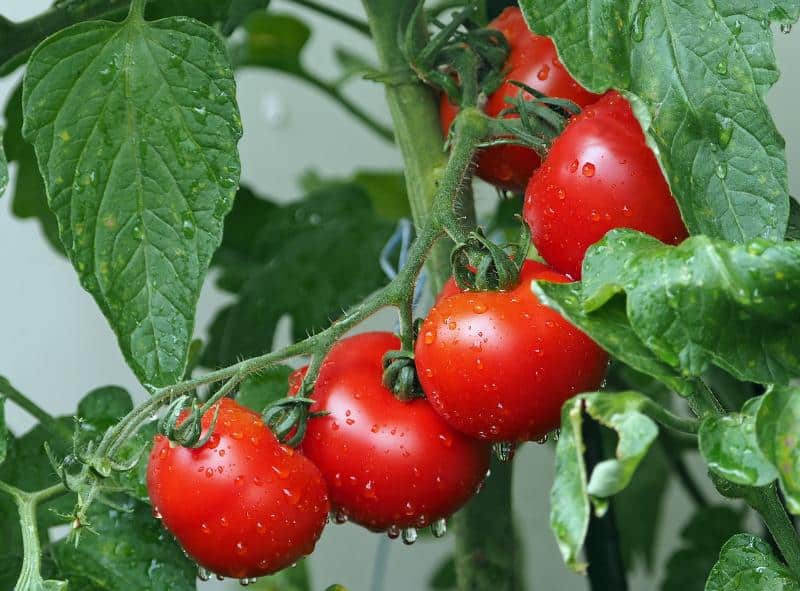
Tomatoes are perhaps the quintessential garden vegetable (though technically a fruit!) that thrives in full sun. With their vibrant red or yellow skin and luscious taste, they never fail to delight. For optimal growth, tomatoes require a sunny spot with at least 6-8 hours of sunlight per day. They prefer well-drained soil enriched with compost or organic matter.
Varieties abound, ranging from the sweet cherry tomato to the hearty beefsteak. To maximize your harvest, consider supporting your plants with cages or stakes, which helps keep the fruit off the ground and improves air circulation. Regular watering, preferably at the base of the plant to avoid wetting the leaves, will prevent issues such as blossom end rot. Plus, nothing compares to the taste of a garden-fresh tomato in your summer salads or sauces!
Sunlight Needs: Requires at least 6-8 hours of direct sunlight daily.
Soil Preference: Thrives in well-drained soil enriched with compost or organic matter for optimal growth.
Variety Options: Includes a plethora of options from sweet cherry tomatoes to meaty beefsteak varieties, allowing for diverse culinary uses.
Support Systems: Utilize cages or stakes to support the plants and improve air circulation, which helps reduce diseases.
Watering Tips: Water deeply at the base of the plant to avoid wetting the leaves, which can prevent issues like blossom end rot.
Culinary Uses: Perfect for salads, sauces, and fresh eating, tomatoes are a great choice for summer dishes.
Eggplant
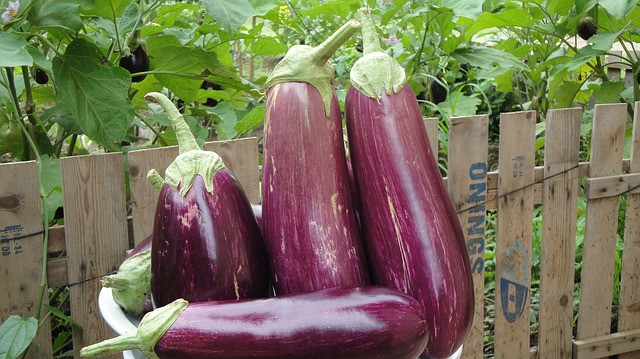
Eggplants, with their glossy skins and unique shapes, might just steal your heart — and your garden space! These sun-loving vegetables thrive in well-drained soil and require full sunlight, ideally about 6-8 hours daily. Eggplants come in various shapes and colors, from the traditional deep purple to striking whites and greens.
When it comes to growing, patience is key. Eggplants prefer warmer temperatures and may require some extra care in cooler climates. They develop best when the soil warms up, so plant them well after the last frost. Regularly feeding them with fertilizers will also yield bigger, tastier fruits. You can use them in a myriad of dishes — from grilling to making eggplant parmesan, this vegetable offers an exciting textural contrast.
Sunlight Needs: Requires full sunlight with around 6-8 hours daily.
Soil Preference: Prefers warm, well-drained soils rich in organic matter.
Growth Period: Takes time to mature, prompting late season patience, particularly in cooler climates.
Planting Tips: Plant after the last frost when the soil is warm, as they prefer high temperatures.
Fertilizing: Regular feeding with a balanced fertilizer will produce larger, tastier fruits.
Culinary Uses: Versatile in the kitchen, eggplant can be grilled, roasted, or made into dishes like moussaka or baba ganoush.
Okra
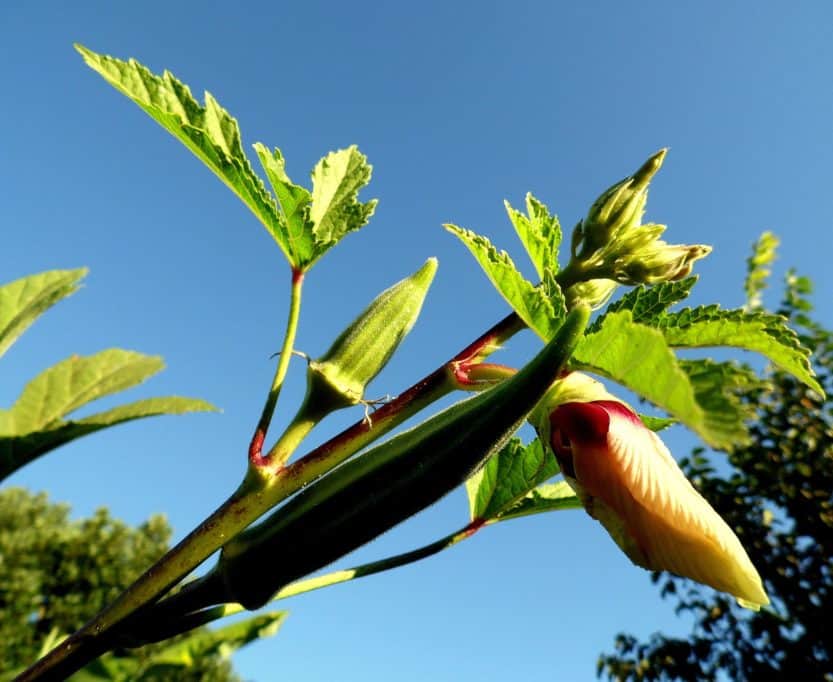
Another delightful addition to your full sun garden is okra, a vegetable known for its unique flavor and nutrition. This heat-loving plant thrives in warm weather and needs full sun exposure to grow prolifically. Okra is easy to maintain and prefers well-drained, fertile soil.
One of the great aspects of okra is its incredible resilience in the face of heat — making it an excellent choice for gardens in warmer climates. The edible pods, often harvested young, are wonderful in gumbo, stews, or simply fried. They can also be pickled for a zesty accompaniment to your meals. With minimal pests and diseases, okra is a fabulous option for those looking to add low-maintenance vegetables to their garden.
Sunlight Needs: Thrives in full sun with a minimum of 6-8 hours of direct sunlight each day.
Soil Preference: Prefers well-drained, fertile soil rich in organic content.
Heat Resilience: Okra excels in heat, making it a great choice for hot summer months.
Watering Needs: Consistent watering is essential, particularly as pods begin to form.
Pest Resistance: Relatively low pest and disease issues make it a good option for beginners.
Culinary Uses: Great in gumbo, stir-fries, and even pickled for a twist on traditional sides.
Basil
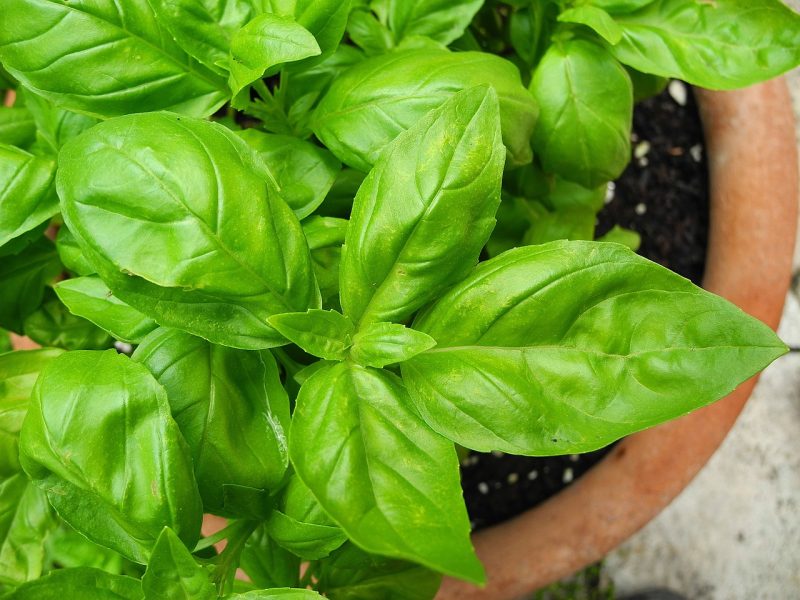
While basil is typically classified as an herb, its role in the garden should not be underestimated. This aromatic plant thrives under the sun, flourishing with at least 6-8 hours of direct sunlight each day. Having your basil close to your tomatoes? Even better! The two plants are not only companions in the garden but also complement each other beautifully in the kitchen.
Basil loves nutrient-rich, well-drained soil. Regular pinching of the tops of the plant will encourage bushier growth, yielding more leaves for your culinary creations. From pesto to salads, fresh basil elevates the flavor of any dish it’s added to. It’s also worth noting that basil comes in various varieties, including sweet, Thai, and purple basil, each bringing its own character to your dishes.
Sunlight Requirements: Thrives best in at least 6-8 hours of direct sunlight each day.
Soil Preference: Benefits from nutrient-rich, well-drained soil.
Growth Encouragement: Regularly pinching back the tops encourages a bushier plant, leading to more flavorful leaves.
Spacing: Needs space to promote airflow and prevent disease, typically planted 12-18 inches apart.
Culinary Uses: Elevates dishes like pasta, pizza, and fresh salads; also great for making fresh pesto and infusing oils.
Sweet Potatoes
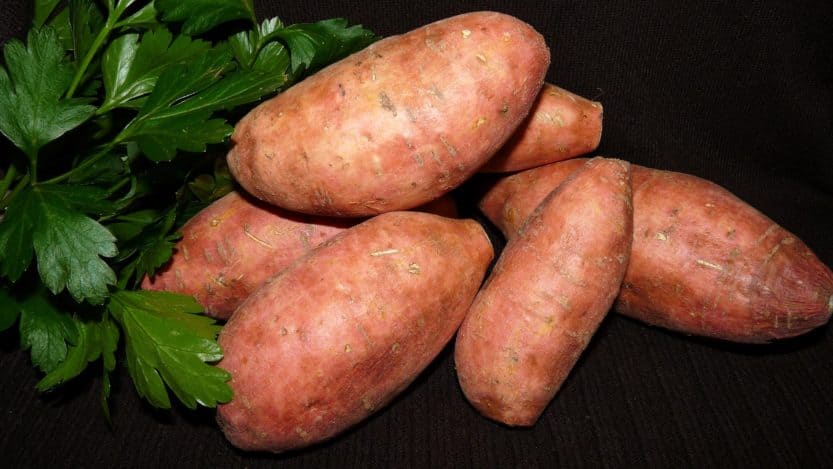
Sweet potatoes are a highly nutritious and versatile option that loves full sun. These tubers thrive in well-draining sandy loam and require 6-8 hours of direct sunlight per day for optimal growth. When planting sweet potatoes, it’s crucial to wait until the soil has warmed, as they flourish in warm conditions.
Sweet potatoes can be grown from slips (young plants) and prefer consistent watering to develop their sweet, creamy texture. They not only add a colorful aesthetic to your garden with their vibrant vines and tubers but also boast a wide range of culinary uses — from savory dishes to baked desserts. Rich in vitamins and minerals, sweet potatoes also provide a healthful option for your meals.
Sunlight Needs: Requires 6-8 hours of sunlight for optimal growth and tuber development.
Soil Preference: Thrives best in well-drained sandy loam with ample organic matter.
Warm Climate: Prefers warm soil; plant after the last frost to ensure conditions are right for growth.
Watering Needs: Prefer consistent, even moisture, especially during the tuber development stage.
Harvesting: Harvest when the leaves start to yellow; they can be stored for months if cured properly.
Culinary Uses: Enjoyed baked, roasted, or mashed, sweet potatoes can also be used in pies and soups.
Sweet Peppers
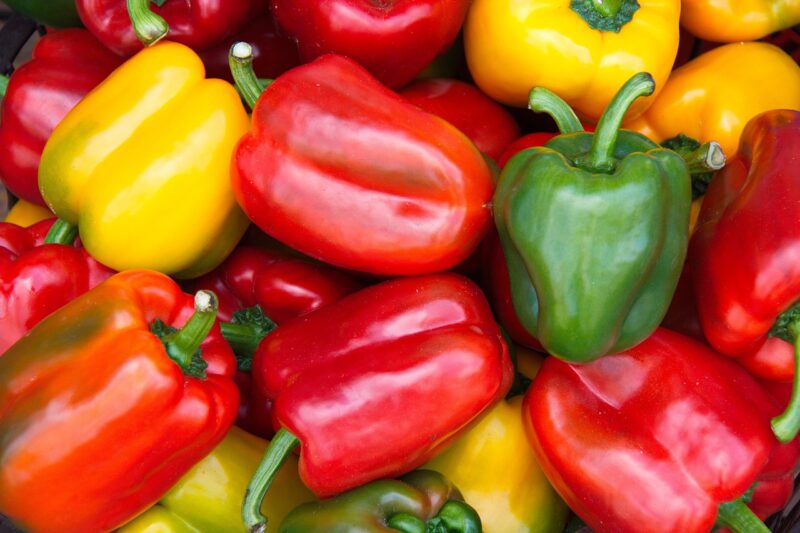
Sweet peppers, including bell peppers and specialty varieties, are prized garden favorites that flourish in sunny areas. Requiring at least 6-8 hours of sunlight each day, these colorful vegetables need nutrient-rich soil to grow well. As an added perk, peppers can be started indoors to catch the warm weather early, giving you a jump-start on your garden.
With a variety of colors ranging from yellow to red to purple, sweet peppers pack a punch not just in nutrition but also in aesthetic appeal. They can be harvested at different stages, depending on your preference for flavor — green peppers are less sweet, while red and yellow become sugary, making them perfect for salads and salsas. With adequate care, including consistent watering and occasional feeding, sweet peppers can be incredibly rewarding to grow.
Sunlight Needs: Needs plenty of sunlight — ideally 6-8 hours daily — to develop sweetness in the peppers.
Soil Preference: Thrives in nutrient-rich, well-drained soil for the best fruiting.
Planting Tips: Can be started indoors to extend the growing season; transplant after frost risk is over.
Watering Schedule: Regular watering is essential to avoid blossom drop and to produce luscious fruits.
Harvest Timing: Can be picked at different color stages, affecting sweetness — red peppers are generally the sweetest.
Culinary Uses: Versatile in the kitchen, they can be eaten raw, grilled, or stuffed for delightful dishes.
Cucumber
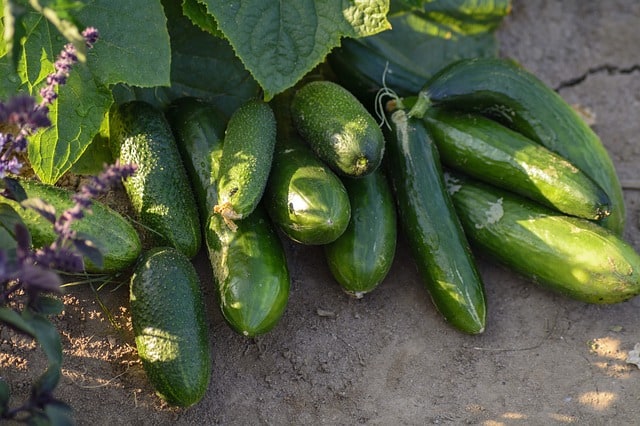
Cucumbers are a refreshing addition to the full sun garden, perfect for summer salads and snacks. These trailing vines thrive in warm, sunny conditions with at least 6-8 hours of sunlight daily. A trellis can assist in growing cucumbers vertically, saving space and enhancing air circulation around the plants.
Cucumbers prefer moist, rich soil and benefit from regular watering to keep the fruits crisp and hydrated. The choices of cucumbers range from varieties suited for pickling to sweet slicers. Just be wary of diseases like powdery mildew and manage pests appropriately to ensure a rich and plentiful harvest. Fresh cucumbers offer that signature crunch that pairs beautifully with summer dishes and drinks.
Sunlight Needs: Require 6-8 hours of direct sunlight for optimal fruit production.
Space Management: Grow well on trellises to maximize space and improve air circulation, which helps reduce diseases.
Soil Requirements: Prefer rich, well-drained soil that retains some moisture without becoming waterlogged.
Watering Needs: Regular watering is crucial, especially once they begin to fruit; avoid watering the leaves to prevent powdery mildew.
Variety Options: Includes slicing cucumbers, pickling cucumbers, and other specialty varieties that bring diversity to your garden.
Culinary Uses: Crisp and refreshing, cucumbers can be sliced for salads, blended into smoothies, or pickled for snacks.
Sweet Corn
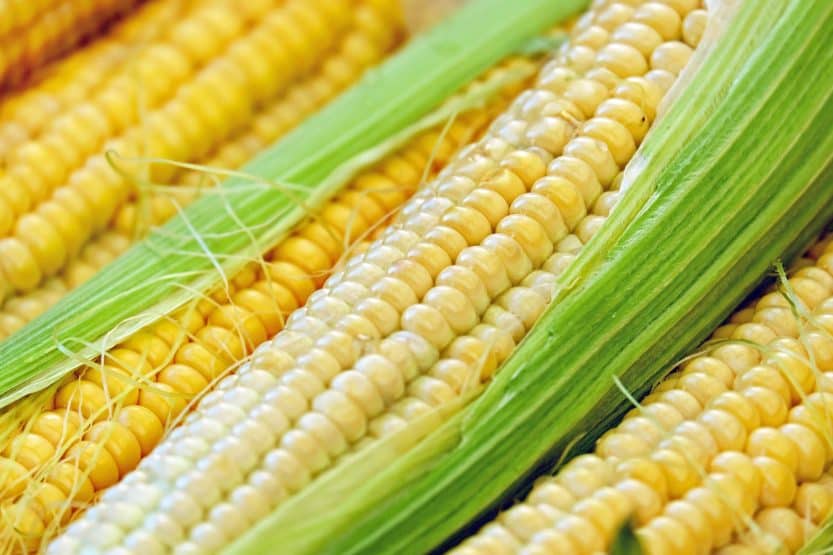
Sweet corn is synonymous with summer and sunshine, making it a staple in many gardens. This tall stalked plant requires plenty of sunlight, ideally 6-8 hours, and should be planted in a wide block for better pollination. Corn thrives in nutrient-rich, loamy soil, making early preparation vital for a successful crop.
Regular watering, especially during the tasseling and cob-filling stages, ensures sweet, juicy kernels. The best reward for your efforts is enjoying fresh corn on the cob at summer barbecues or in corn salads. As you grow sweet corn, you are not just cultivating a vegetable; you’re investing in a classic piece of seasonal delight.
Sunlight Needs: Requires at least 6-8 hours of sunlight a day for robust growth.
Soil Preference: Thrives in fertile, well-drained soil that is regularly tilled.
Planting Configuration: Best planted in blocks for effective pollination; this increases yields significantly.
Watering Requirements: Regular watering, particularly while the plants are growing and forming ears, is crucial for sweet, juicy kernels.
Harvest Timing: Harvest at the “milk stage” for the sweetest corn; kernels should be milky and full.
Culinary Uses: Fresh corn is delicious on the cob, in salads, or used in salsas; it also freezes well for later use.
Black Eyed Pea
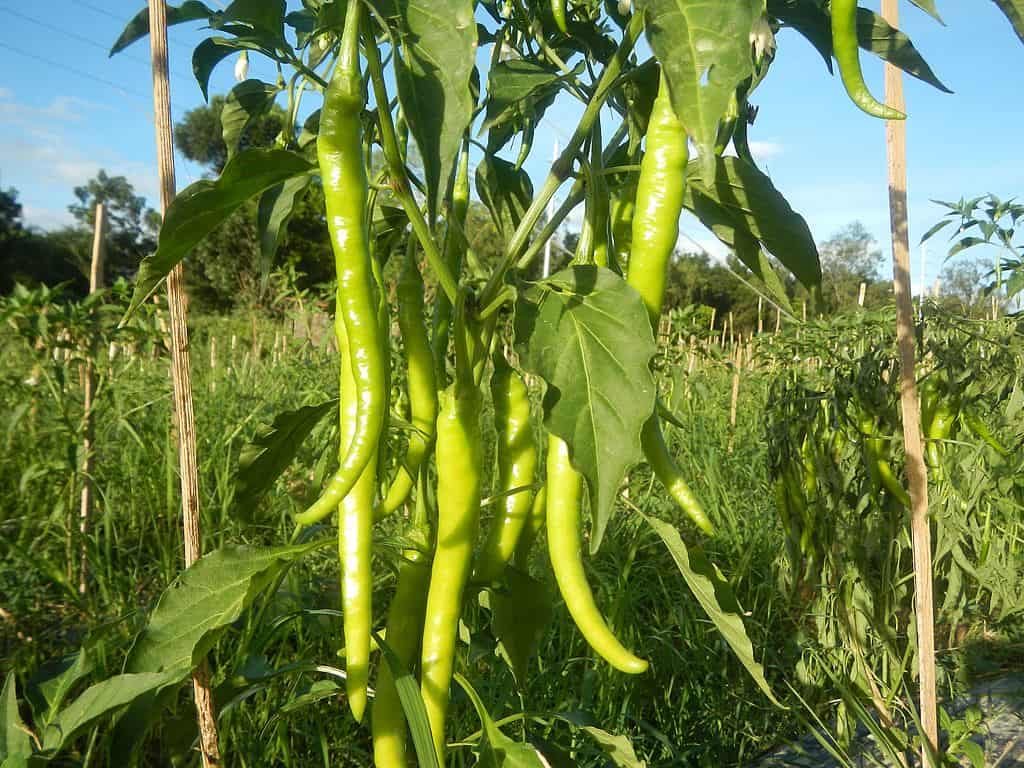
Black-eyed peas are an undersung hero of the garden, thriving in full sunshine and offering a plethora of culinary possibilities. These legumes require warm conditions and can adapt to varied soil types, although rich, well-drained soil is best. With a minimum of 6 hours of sunlight, black-eyed peas develop into robust plants that yield an abundant harvest.
These peas can be enjoyed in salads, soups, or as a comforting side dish for Southern cuisine. Beyond their culinary appeal, they also enrich the soil with nitrogen, making them a superb choice for crop rotation. Cultivating black-eyed peas means embracing both sustainability and deliciousness in your gardening experience.
Sunlight Needs: Enjoys sunny conditions with a minimum of 6 hours of sun each day.
Soil Preference: Adapts to varied soil types but thrives in well-drained, fertile ground.
Growing Cycle: Fast-growing, allowing for harvest within 60-90 days after planting.
Drought Resilience: Naturally drought-tolerant, making it a reliable choice in various climates.
Nutritional Benefits: High in protein, fiber, and vitamins, contributing to a wholesome diet.
Culinary Uses: Eaten fresh, dried, or in dishes like black-eyed pea salad, soups, or traditional Southern cuisine.
Beans
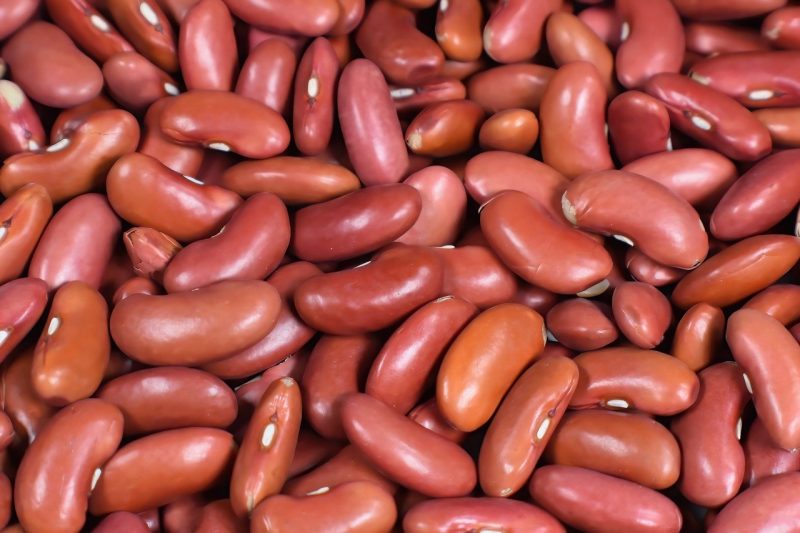
Beans, including varieties such as green beans, kidney beans, and pinto beans, are perfect candidates for full sun gardens. These legumes are not only productive but also help improve soil health thanks to their nitrogen-fixing properties. Beans enjoy warm weather and at least 6-8 hours of sunlight.
The growth of bean plants can be enhanced with staking or trellising, especially for climbing varieties. With a little care regarding watering and pest management, beans can yield a continuous harvest throughout the summer. They make for delightful additions to salads, sautéed dishes, or even dried for use in winter soups.
Sunlight Needs: Require a minimum of 6-8 hours of sunlight each day to thrive.
Soil Preference: Prefer nutrient-rich, well-drained soil to establish a healthy root system.
Growth Habits: Bush beans grow bushy, while pole beans require supports for climbing, making them versatile for space.
Pest Management: Beans can suffer from pests like aphids or beetles; utilize organic pest control measures to protect your crop.
Harvest Timing: Check regularly and harvest young for the best flavor and texture; overripe beans may become tough.
Culinary Uses: Versatile in dishes, beans can be sautéed, added to salads, or incorporated into hearty stews.
Zucchini
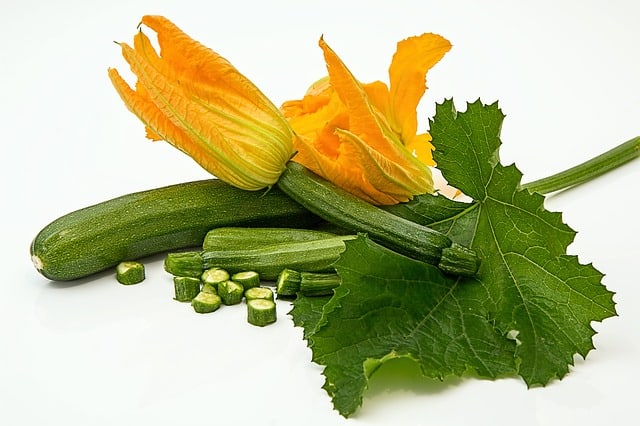
Zucchini is a classic choice for vegetable gardens, known for its prolific production and ease of growth. This squash prefers full sun, enjoying 6-8 hours of sunlight each day. Zucchini plants thrive in well-drained soil enriched with compost.
With adequate moisture and consistent care, zucchini plants can yield abundant crops, often producing more than you can eat! Consider exploring various zucchini recipes, from sautéing to baking, as its adaptability can inspire your culinary creativity. Don’t forget to experiment with different zucchini types, such as the rounded “Eight Ball” or striped varieties for an eye-catching addition to your garden and kitchen.
Sunlight Needs: Thrives with full sun exposure of 6-8 hours daily.
Soil Requirements: Prefers fertile, well-drained soil enriched with compost.
Spacing: Requires adequate space to accommodate its broad leaves and sprawling growth habit.
Watering Practices: Needs consistent moisture; avoid overhead watering to prevent fungal diseases.
Harvesting: Harvest zucchini while they are still small and tender for the best taste; larger zucchinis can be too fibrous.
Culinary Uses: Highly versatile, zucchini can be grilled, sautéed, baked in desserts, or spiralized as a healthy pasta alternative.
Lima Beans
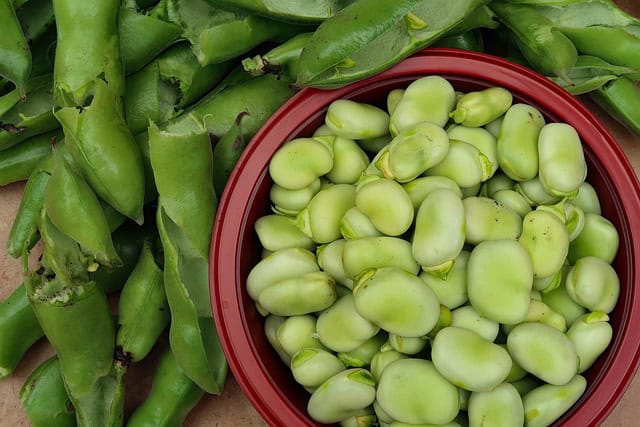
Lima beans are a wonderful addition to your full sun vegetable patch. These legumes thrive in warm weather, needing 6-8 hours of sunlight to produce their flavorful pods. Lima beans do best in well-drained, fertile soil and are often grown as a summer crop.
They can be grown as bush-types or pole-types, depending on your space and preference. The sweet, creamy flavor of lima beans is a sought-after addition to casseroles, salads, and soups. Additionally, they serve as an excellent soil-enriching crop, enhancing the health of your garden beds for future plantings.
Sunlight Needs: Thrives in full sun with about 6-8 hours of sunlight daily.
Soil Preference: Benefit from rich, well-drained soil to produce wholesome beans.
Growth Types: Available as both bush and pole varieties; bush types take less space while pole varieties can grow tall.
Watering Needs: Requires regular watering, especially important during flowering for adequate pod development.
Harvest Timing: Harvest when beans are plump and green but before they dry out completely.
Culinary Uses: Lima beans are delicious in casseroles, soups, or served as a side dish.
Tomatillos
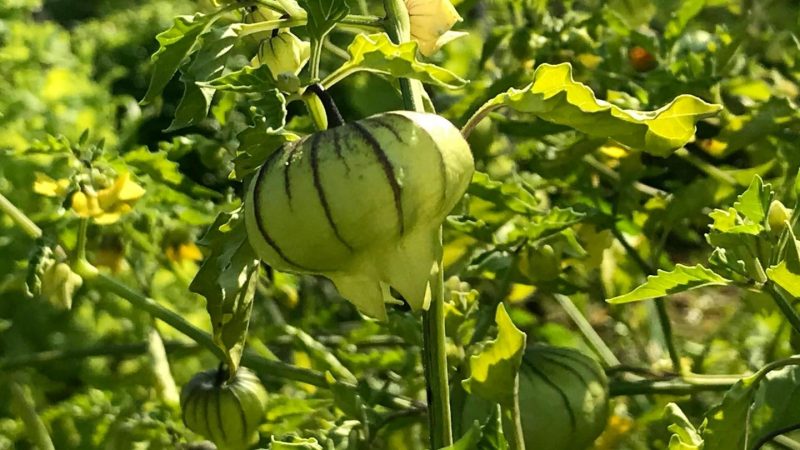
Tomatillos offer a unique twist to a full sun garden; these small green fruits are encased in papery husks and are essential to many Mexican dishes, like salsas. Tomatillos love full sun and thrive in similar conditions to tomatoes, requiring 6-8 hours of sunlight and well-drained soil.
Growing tomatillos involves ensuring adequate spacing since they can spread out considerably. The fruits are harvested when they fill out their husks and are firm to the touch. Tomatillos are also relatively hardy against pests and diseases, making them a low-maintenance choice for adventurous gardeners.
Sunlight Needs: Thrive with full sun exposure of 6-8 hours daily.
Soil Requirements: Prefer rich, well-drained soil for best growth.
Planting Notes: Be mindful to plant them close to other tomatoes for effective pollination.
Watering Practices: Regular watering is essential, especially as fruits begin to form.
Harvesting Tips: Pick them when they fill out their husks and are firm to the touch; this is when they have the best flavor.
Culinary Uses: Use in salsas, sauces, and soups, bringing a delightful tartness to dishes.
Pumpkin
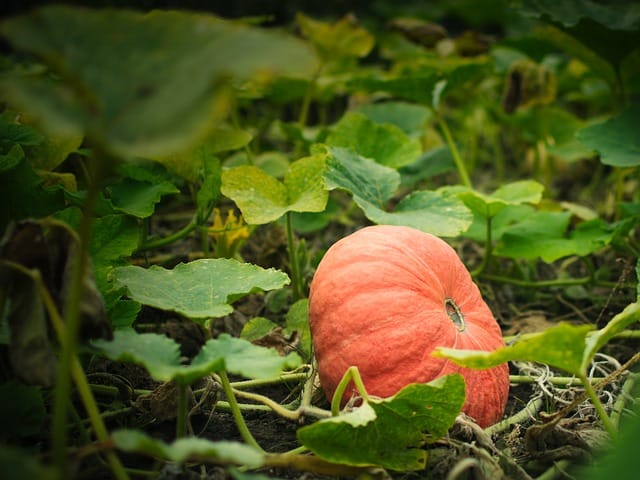
Pumpkins are the charming giants of the vegetable world! They thrive in full sun, requiring warm conditions and ample space to grow. Pumpkin plants love rich, well-drained soil and need at least 6 hours of sunlight to develop those impressive, round fruits.
These plants can spread quite a bit, so make sure to allocate sufficient room in your garden. Pumpkins can be used not only for Halloween decorations but also in many delicious fall recipes, from pies to soups to roasted seeds. The satisfaction of harvesting your own pumpkins is unparalleled, often marking the change of seasons in delightful ways.
Sunlight Needs: Requires full sun, enjoying 6-8 hours of sunlight each day.
Soil Requirements: Thrives in rich, well-drained soils that are well-prepared ahead of planting.
Spacing Considerations: Need plenty of space to spread out; plan accordingly for sprawling vines.
Watering Needs: Regular deep watering is crucial during the growing season, particularly as fruits develop.
Harvest Timing: Best harvested when skin is hard and color is vibrant; use a sharp knife to cut the stem.
Culinary Versatility: Used in pies, soups, and roasted dishes alike; pumpkin seeds can be toasted for a healthy snack.
Sponge Gourd
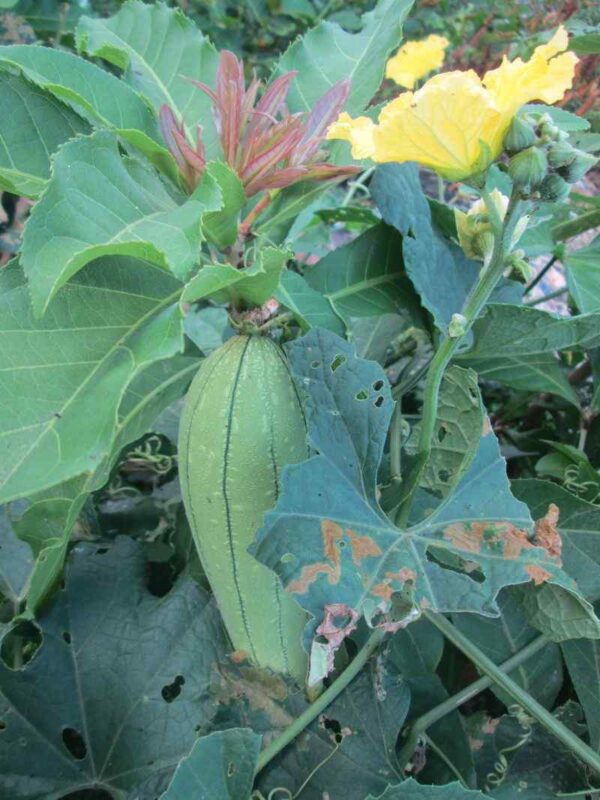
Sponge gourd, also known as loofah, is an unusual and versatile vegetable that thrives well in full sun. With its unique growth habit, it can be grown on trellises, making it an efficient use of space in your garden. Sponge gourds require around 6-8 hours of sunlight a day, preferring warm and moist conditions.
The fruits are harvested when young and tender for culinary delights, but mature ones can be used dried as natural sponges. Incorporating sponge gourd into stir-fries or soups brings a refreshing texture and nutritional benefits. Its ornamental value adds to the garden, with its long, trailing vines and distinct foliage.
Sunlight Needs: Requires full sunlight, enjoying about 6-8 hours of direct sunlight.
Growing Structure: Best grown on a trellis to optimize space and enhance air circulation.
Soil Requirements: Prefer rich, well-drained soil for optimal growth.
Watering Recommendations: Regular watering is essential, especially during the fruit-setting stage.
Culinary Uses: Used in stir-fries and soups, sponge gourd is a nutritious addition to many meals.
Melons
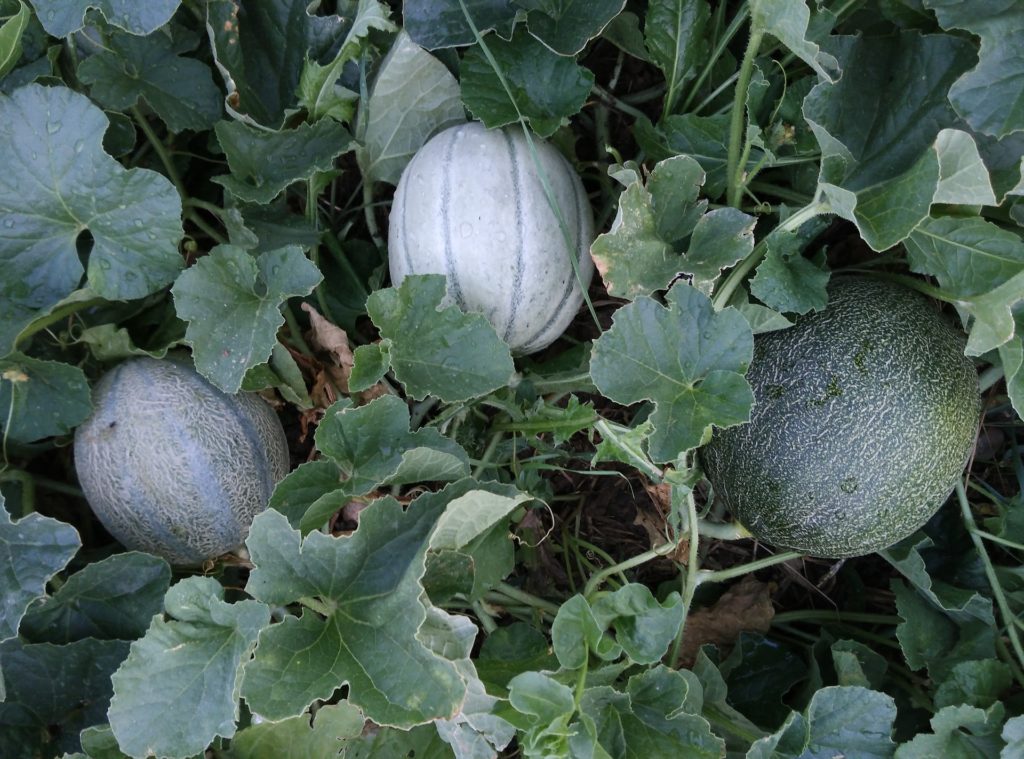
Melons, including watermelon and cantaloupe, epitomize summer sunshine. These juicy fruits require plenty of sunlight — ideally, 8 hours a day — and thrive in warm conditions. When planting melons, choose a sunny location with well-drained, sandy soil enriched with organic material.
Regular watering is crucial during the fruiting stage, as it helps develop the sweet, luscious flavors melons are known for. The excitement of harvesting your own melons is unmatched; nothing tastes quite as refreshing on a hot day. Whether enjoyed fresh or used in drinks and salads, melons are a summertime favorite that embodies the essence of sunny gardens.
Sunlight Needs: Require 8 hours of sunlight daily for optimal sweetness.
Soil Preferences: Thrive in sandy, well-draining soil that’s rich in organic matter.
Watering Needs: Consistent moisture is key, particularly during the fruiting stage; avoid wetting the foliage.
Planting Layout: Often grown on hills or mounds, allowing for adequate drainage and airflow.
Harvest Timing: Melons are typically ready when they emit a sweet aroma and the skin starts to dull in color.
Culinary Uses: Enjoyed fresh, in fruit salads, or blended into refreshing drinks, melons are also popular for desserts.
Green Beans
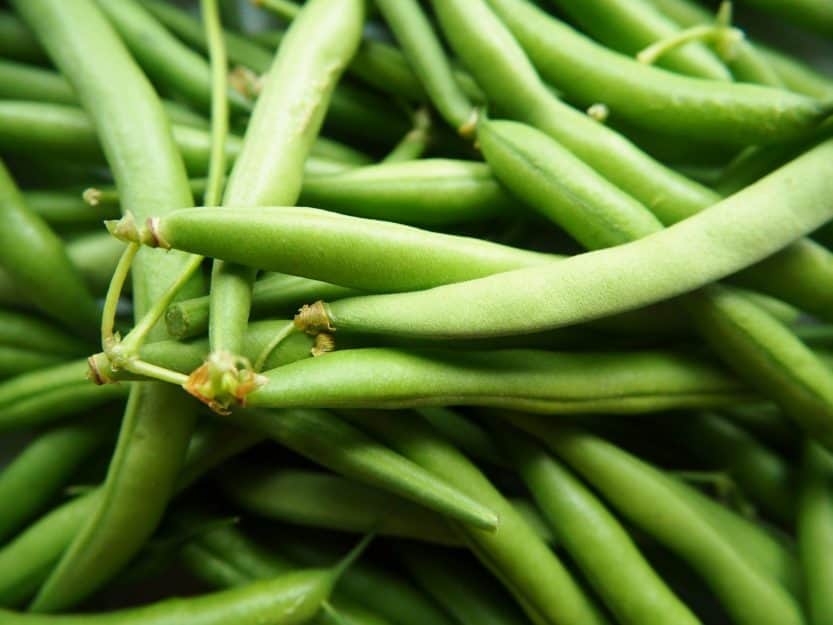
Green beans are classic garden favorites that excel in full sun. They require a minimum of 6-8 hours of sunlight each day and grow well in well-drained, rich soil. These versatile vegetables can be grown as bush types or pole varieties, adapting well to various garden layouts.
With proper care and consistent watering, green beans are highly productive and can yield continuous crops throughout the summer. Whether you enjoy them steamed, stir-fried, or pickled, green beans bring freshness and nutrition to your table. They also help enrich the soil, promoting a healthier garden ecosystem.
Sunlight Needs: Require at least 6-8 hours of sunlight for proper growth.
Soil Preference: Prefer well-drained, nutrient-rich soils, ideally prepared with compost or fertilizer.
Growth Cycle: Fast-growing, allowing for frequent harvests throughout the summer.
Harvest Timing: Regularly check and pick beans at their ideal size for the best texture and flavor.
Pest Management: Be vigilant about pests; utilizing companion planting can deter infestations.
Culinary Uses: Serve steamed, sautéed, or in casseroles, and can be pickled for delightful variations in taste.
Jalapeno Peppers
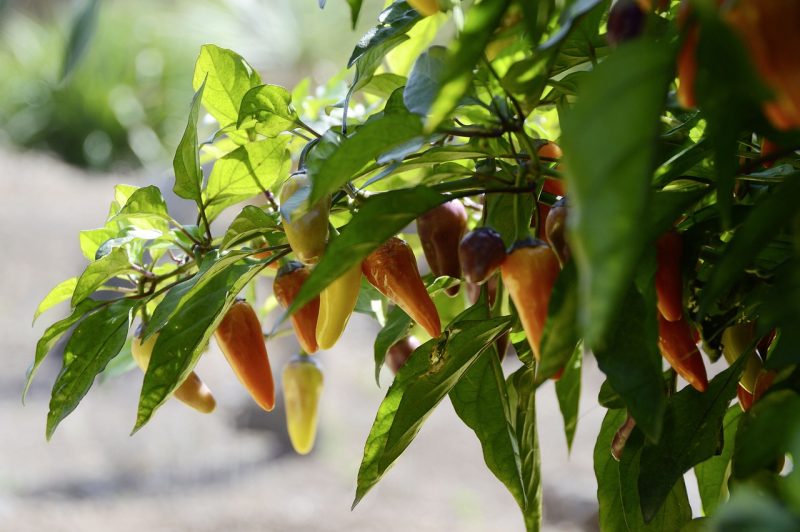
Jalapeno peppers add a hint of spice to any garden and culinary endeavor! These vibrant peppers thrive in full sunlight, requiring at least 6-8 hours of sunshine to develop their characteristic heat. They prefer well-drained, fertile soil to produce the best-quality fruits.
Many gardeners start jalapenos indoors and transplant them after the risk of frost has passed. Regular watering and occasional feeding will promote robust plant growth, leading to plentiful harvests. From fresh salsas to spicy sauces, jalapenos are a fantastic addition for those who enjoy a kick in their dishes.
Sunlight Needs: Requires full sunlight, ideally 6-8 hours each day for vigorous growth.
Soil Preference: Thrives in well-drained, nutrient-rich soil for optimal fruit production.
Watering Practices: Regular watering is essential; ensure soil is consistently moist but not waterlogged.
Fertilization Tips: Occasional feeding with a balanced fertilizer encourages healthy growth and abundant fruiting.
Harvest Timing: Can be picked at various stages, allowing for versatility in flavor from spicy to mildly sweet.
Culinary Uses: Used in salsas, sauces, and marinades, jalapenos also serve well in stuffed pepper dishes.
Winter Squash
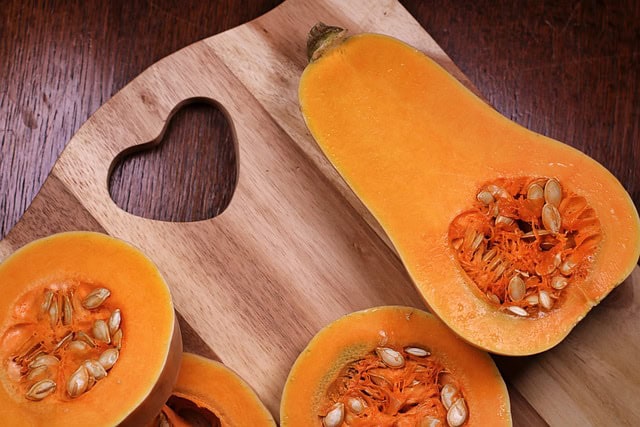
Winter squash, including varieties like butternut and acorn, loves the warm embrace of summer sunshine before being harvested in the fall. Full sun exposure, requiring about 6-8 hours daily, is critical for developing sweet and flavorful fruits. They thrive in well-drained, fertile soil enriched with organic compost, making early preparation key to a successful crop.
Harvest winter squash when the skin hardens and the color turns vibrant; this ensures the sweetest, most nutritious flavor. Use these squashes in soups, roasts, or even baked goods. They’re not just delicious; their shelf stability means you can enjoy the fruits of your labor well into the colder months!
Sunlight Needs: Requires full sun, needing about 6-8 hours of sunlight daily.
Soil Preference: Thrives in fertile, well-drained soil enriched with organic compost.
Spacing: Requires ample space to allow for sprawling vines; plan for sufficient distance between plants.
Watering Needs: Regular watering during the growth phase is important; limiting water as harvest time approaches can enhance sweetness.
Harvest Timing: Best harvested when skins harden and fruits are vibrant in color.
Culinary Uses: Versatile for soups, roasts, and pies, winter squash can be stored for extended periods, extending your garden’s freshness into the colder months.
Malabar Spinach
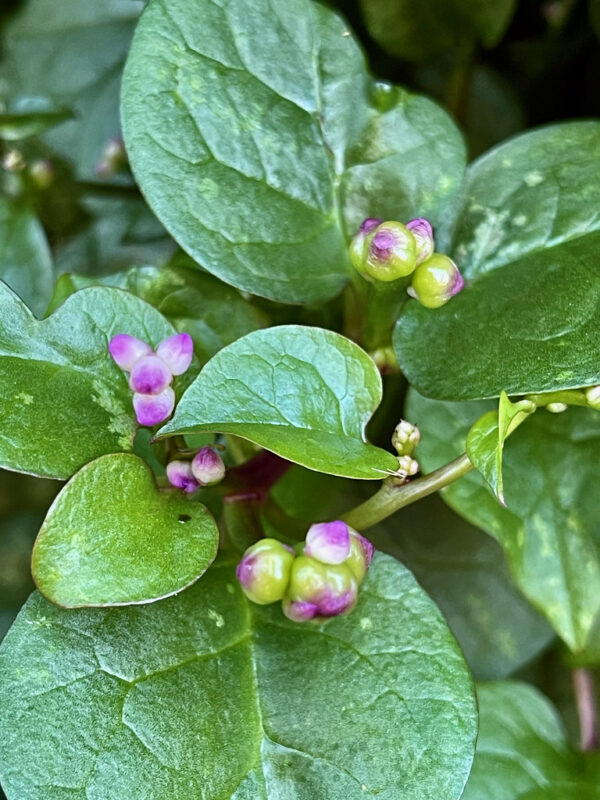
Malabar spinach is an intriguing vegetable that loves sunny spots! Unlike traditional spinach, it thrives in warmer conditions, making it an excellent option for summer gardens. This heat-tolerant plant enjoys well-drained soil and needs 6-8 hours of sunlight for optimal growth.
The fleshy, succulent leaves provide a unique flavor and are perfect for salads, stir-fries, or as a cooked green. Malabar spinach is rich in nutrients, including vitamins A and C, making it a healthful addition to your diet. Observe its vibrant growth up a trellis, providing both food and visual interest in your vegetable garden.
Sunlight Needs: Thrives in full sun with approximately 6-8 hours of direct sunlight each day.
Growth Characteristics: A vine that can quickly cover trellises, providing both food and shade.
Soil Requirements: Prefers well-draining, nutrient-rich soil for healthy leaf production.
Watering Needs: Regular watering to keep soil moist is important, particularly during hot weather.
Versatile Harvesting: Leaves can be harvested continuously; young leaves are tender and taste great in fresh salads.
Culinary Uses: Common in Asian dishes, Malabar spinach adds a unique flavor and can be used in soups, stir-fries, or salads.
New Zealand Spinach
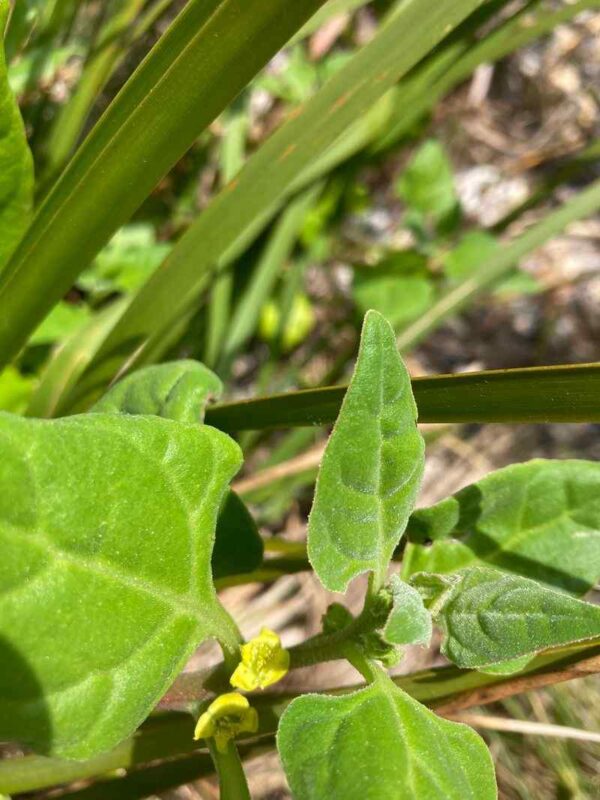
New Zealand spinach may not be as well-known, but it deserves a place in your sunny garden space. This heat-tolerant leafy green thrives in full sun, needing around 6-8 hours of sunlight daily. Unlike its temperate counterparts, New Zealand spinach flourishes throughout the summer, offering fresh greens even in hot climates.
This vegetable loves rich, well-drained soil and can be harvested continuously, promoting a bountiful summer supply. Incorporate it into salads or as a cooked leafy green alternative. Its adaptability and nutritional benefits make it a fantastic choice for those wanting to diversify their full sun vegetable selection.
Sunlight Needs: Thrives in full sun with 6-8 hours of sunlight daily.
Heat Tolerance: Unlike traditional spinach, it thrives in warm conditions, making it suitable for summer gardens.
Soil Requirements: Prefers fertile, well-drained soil and regular watering.
Harvesting: Can be harvested continuously throughout the growing season; young leaves have a milder flavor.
Pest Resistance: Generally pest-resistant, making it a low-maintenance green for summer.
Culinary Versatility: Used similarly to regular spinach, it adds nutrition to salads, soups, and stir-fried dishes.


